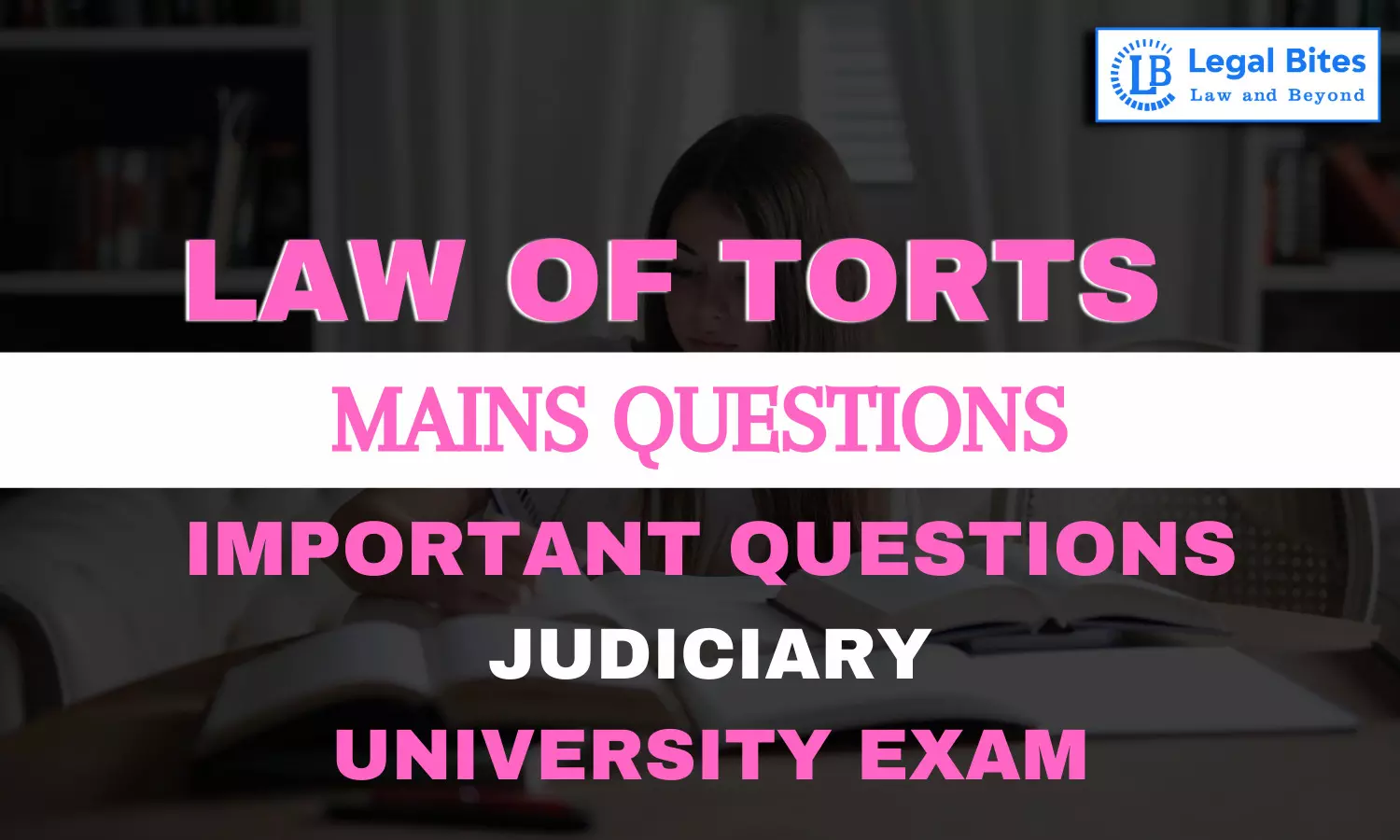What is meant by a “continuing injury”? What modes of redress can the injured person exercise in respect of it?
Find the question and answer of Law of Torts only on Legal Bites.

Question: What is meant by a “continuing injury”? What modes of redress can the injured person exercise in respect of it?Find the question and answer of Law of Torts only on Legal Bites. [What is meant by a “continuing injury”? What modes of redress can the injured person exercise in respect of it?]AnswerA Continuing Injury is an injury that occurs over a period of time rather than as a single, discrete event. It is an injury that continues to affect the victim, sometimes...
Question: What is meant by a “continuing injury”? What modes of redress can the injured person exercise in respect of it?
Find the question and answer of Law of Torts only on Legal Bites. [What is meant by a “continuing injury”? What modes of redress can the injured person exercise in respect of it?]
Answer
A Continuing Injury is an injury that occurs over a period of time rather than as a single, discrete event. It is an injury that continues to affect the victim, sometimes permanently, and may have ongoing symptoms or consequences. Examples of continuing injuries include exposure to toxic substances, medical malpractice resulting in ongoing harm, and psychological harm such as ongoing harassment or abuse.
Examples of continuing injuries in the law of torts include exposure to toxic substances, medical malpractice resulting in ongoing harm, and psychological harm such as ongoing harassment or abuse. In each of these cases, the injury may develop gradually over time and may have long-lasting or even permanent effects on the victim.
To Prove a continuing injury in tort law, the injured person must demonstrate that the injury was caused by the negligence or intentional misconduct of another person or entity. They must also provide evidence to show that the injury has had a significant impact on their life and that it is likely to continue into the future.
If the injured person can prove that their continuing injury was caused by the wrongful conduct of another party, they may be entitled to damages for their past and future losses. This can include compensation for medical expenses, lost income, diminished quality of life, pain and suffering, and emotional distress.
One important aspect of continuing injuries in the law of torts is the issue of "statutes of limitations." These are time limits set by law that dictate how long an injured person has to file a lawsuit seeking compensation for their injuries. In the case of continuing injuries, the statute of limitations may be extended to allow the injured person to file a lawsuit even after the initial injury occurred, as long as the ongoing harm can be shown.
In conclusion, a continuing injury is a type of injury that occurs over a period of time and results in ongoing harm to the victim. To prove a continuing injury in tort law, the injured person must demonstrate that it was caused by the wrongful conduct of another party and that it has had a significant impact on their life. If successful, the injured person may be entitled to compensation for their past and future losses.
Modes of Redress that an Injured Person can Exercise in Continuing Wrong
In cases of continuing injury, the injured person has a number of modes of redress available to them. These include:
Seeking Medical Treatment: In cases of continuing injury, the injured person may need ongoing medical treatment to manage their symptoms and prevent further harm. They may be able to recover the cost of this treatment as part of a legal settlement or judgment.
Seeking Compensation for Past and Future Damages: In cases of continuing injury, the injured person may be entitled to compensation not only for the harm that has already been done but also for future harm that is likely to occur. This can include compensation for lost income, diminished quality of life, and pain and suffering.
Seeking Injunctive Relief: In some cases, the injured person may be able to obtain an injunction to prevent further harm from occurring. For example, if the injury is caused by ongoing harassment or abuse, a court may issue a restraining order to protect the victim from further harm.
Seeking Punitive Damages: In cases where the injury was caused by particularly egregious conduct, the injured person may be entitled to punitive damages in addition to compensatory damages. Punitive damages are intended to punish the wrongdoer and deter similar conduct in the future.
One relevant case law that dealt with continuing injury is the case of Keeton v. Hustler Magazine, Inc. 465 U.S. 770 (1984). In this case, the plaintiff, Keeton, brought a defamation lawsuit against Hustler magazine for an article that implied she had engaged in incestuous behaviour. The New Hampshire Supreme Court ruled that Keeton could pursue her claim for continuing injury, as the article had caused ongoing harm to her reputation and emotional well-being. The court held that Keeton was entitled to both compensatory and punitive damages and that the damages could include both past and future harm.
In conclusion, a continuing injury is an injury that occurs over a period of time and may have ongoing symptoms or consequences. In cases of continuing injury, the injured person has a range of modes of redress available to them, including seeking medical treatment, compensation for past and future damages, injunctive relief, and punitive damages. The Keeton v. Hustler Magazine case is an example of a case that dealt with continuing injury and the remedies available to the injured person.

Mayank Shekhar
Mayank is an alumnus of the prestigious Faculty of Law, Delhi University. Under his leadership, Legal Bites has been researching and developing resources through blogging, educational resources, competitions, and seminars.
